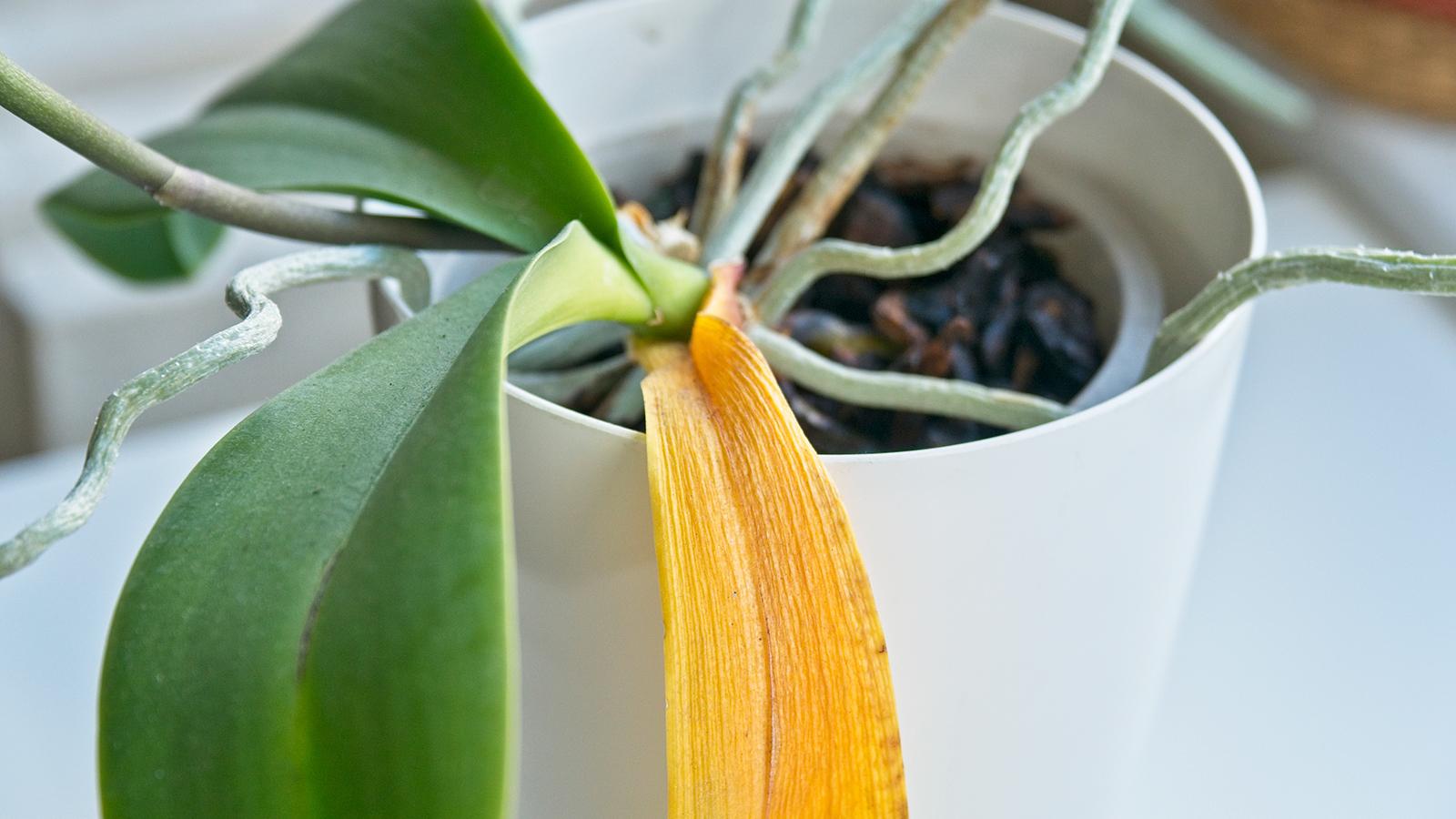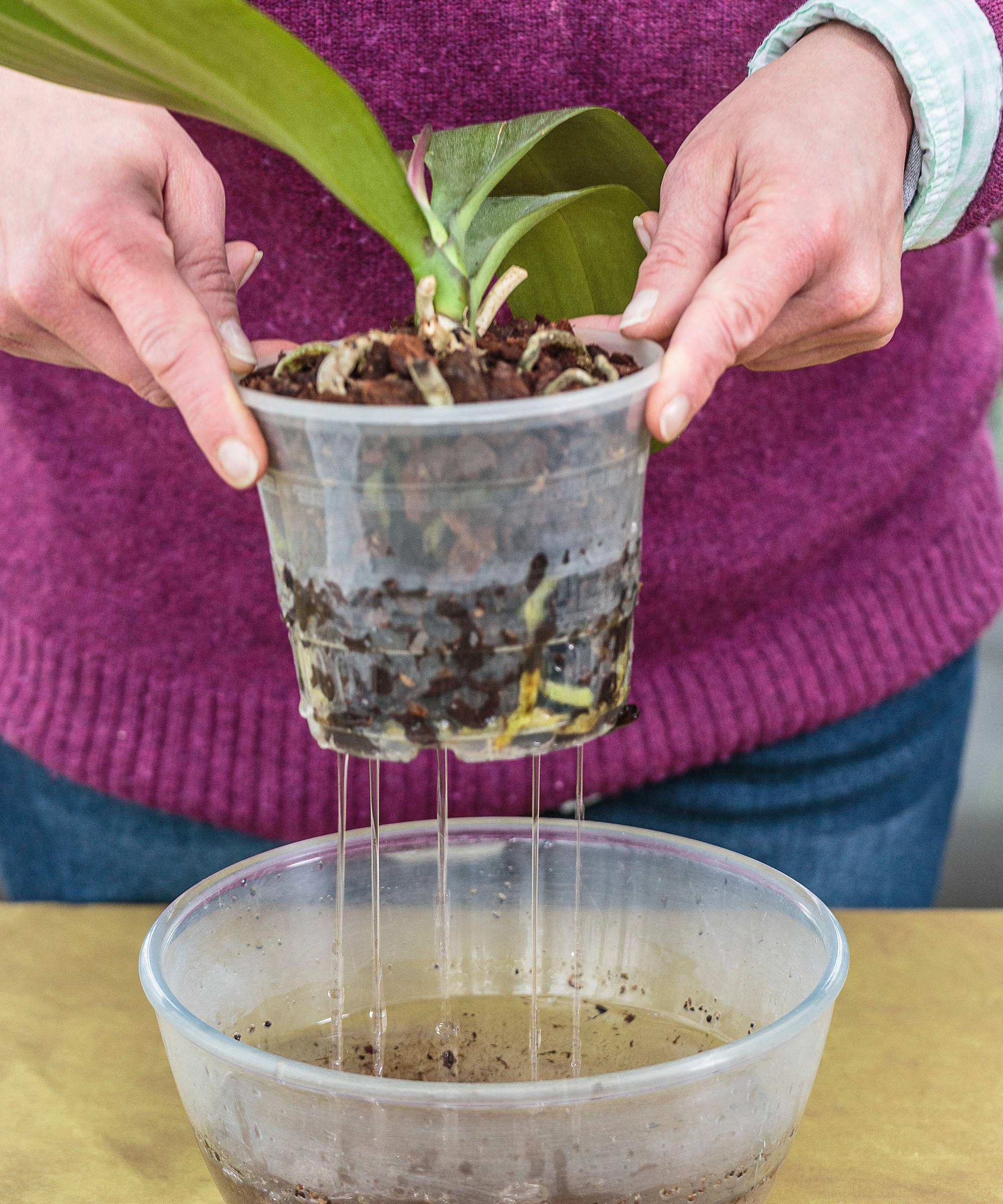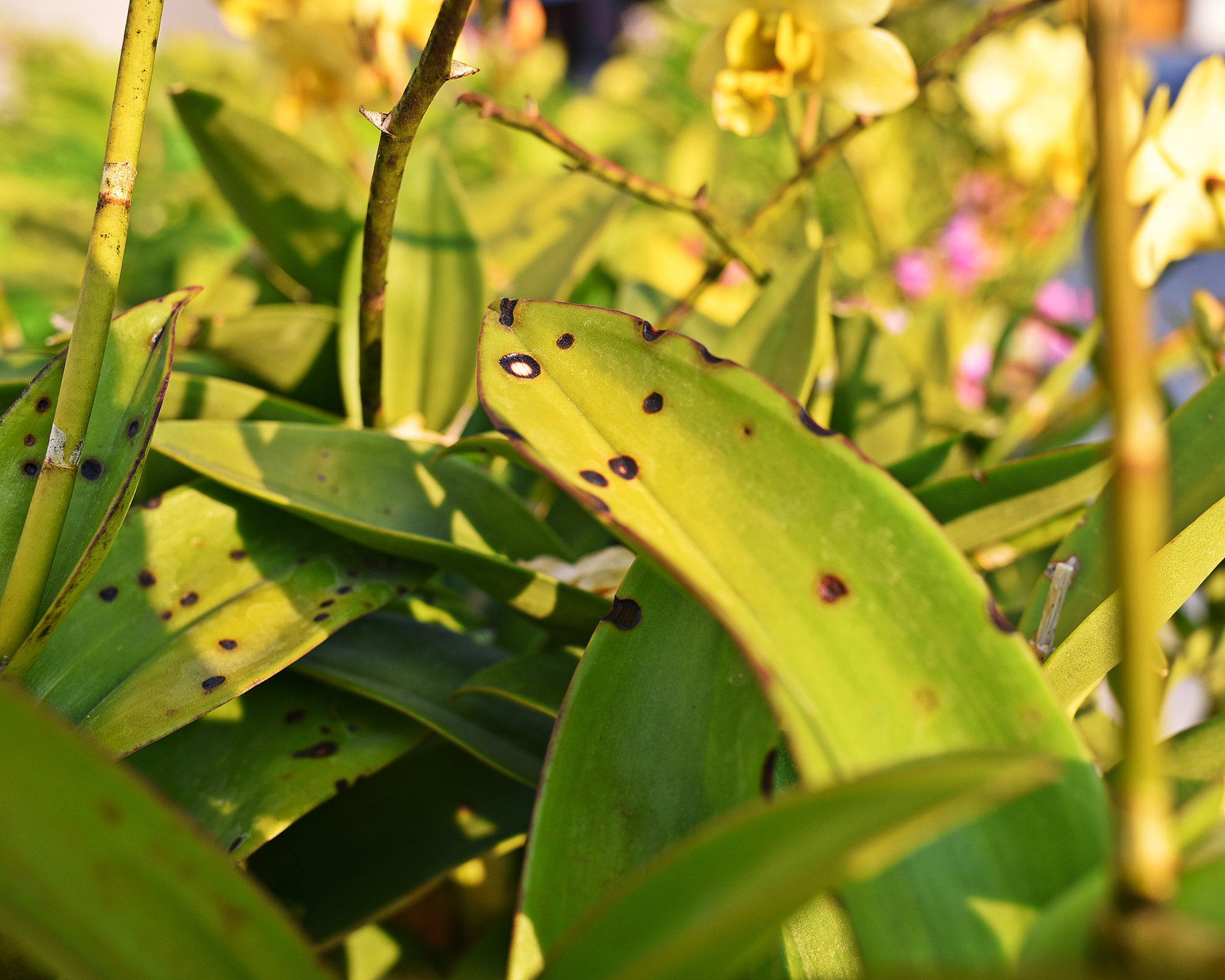Orchid Leaves Turning Yellow: Common Causes And Remedies
Yellow orchid leaves are a frequent cause of concern for indoor gardeners. Discover how to diagnose the issue, and restore your plant to full health.


Orchid leaves turning yellow can be a symptom of a health issue, but it can also be a normal part of the plant’s growth cycle. This makes it difficult for beginner growers to know what’s going on.
A mature, lower orchid leaf turning yellow is usually nothing to worry about. This is typical behavior, as the plant is getting ready to shed the leaf so that new growth can form. Leaf loss may intensify as the plant enters its dormant stage in winter.
However, excessive yellowing – particularly affecting new growth – is one of the more concerning orchid leaf problems. It's a sign of plant stress and usually signifies an issue with orchid care.
Why Are My Orchid Leaves Turning Yellow?
While you can’t prevent yellow orchid leaves falling off, you can diagnose and solve the issue to prevent further plant decline.
Below are the common reasons for yellowing leaves, and how to solve the issue before other orchid problems begin to surface.

Too Much Light
Orchid leaves turning yellow may be a sign that the plant is getting too much direct light. Check for sunburned orchid leaves, as this will be an obvious cause. In contrast, a plant that is not getting enough light exposure usually has dark green leaves.
Orchid light requirements vary between different types of orchids. However, most species do not like to be positioned in direct sunlight.
Sign up for the Gardening Know How newsletter today and receive a free copy of our e-book "How to Grow Delicious Tomatoes".
If your plant is currently in a sunny south-facing window, for example, then try moving it to an area that receives indirect bright light – ideally near an east or west-facing window.
Overwatering
Overwatering is a common cause of plant demise, so learning how to water orchids correctly is key to growing success.
If the roots are left sitting in too much water, it can swiftly cause root rot and orchid crown rot, which may not be noticeable until the orchid leaves turn yellow.
Allow the orchid potting medium to dry out a little between waterings. Don’t wait for it to become bone dry, or you could deprive the plant of water. However, check for signs of moisture before watering again.
Pseudobulb orchid species store some water within the plant, allowing for slightly drier periods between watering. However, those without water-storage capacity, such as the Phalaenopsis orchid, should not be allowed to dry out completely.
Push your finger down into the potting mix to feel for moisture, and check for signs of condensation on the pot.
For varieties with prominent aerial orchid roots, get to know what they should look like when hydrated (plump and silvery green), versus thirsty (dry and brown). Overwatered orchid roots will eventually go mushy, and potentially black or brown with rot.
Bear in mind that when an orchid is flowering, it should be watered more frequently. Cut down waterings once the flowers have faded.

Low Temperatures
If your orchid is positioned in a cold, drafty room, this could be the cause of yellow leaves. However, a loss of flowers or orchid buds falling off would likely occur first.
Orchids can be categorized as warm, intermediate, or cool-growing. Warm-growing orchids, which include Phalaenopsis and Vanda, require daytime temperatures of 70 to 85°F (21 to 29°C), with a nighttime minimum of 60°F (15°C).
Cool-growing orchids, including Cymbidium and Dendrobium, thrive in daytime temperatures of 60 to 70°F (15 to 21°C) and nighttime temperatures of at least 50°F (10°C).
Intermediate-growing orchids, such as Cattleya, Oncidium, and Paphiopedilum, need daytime temperatures of 65 to 75°F (18 to 24°C) and nighttime temperatures of at least 55°F (12°C).
Ensure your orchid is positioned in a room where it can receive these temperatures, and move it away from sources of cold drafts, such as air conditioner vents.
Poor Fertilizing
A lack of nutrients, such as iron, magnesium, or nitrogen, can cause an orchid’s leaves to turn yellow. Orchid fertilizing is an important aspect of care – but only while the plant is in an active growth stage.
A balanced water-soluble orchid fertilizer is the easiest solution – apply weekly or bi-weekly according to the manufacturer’s instructions.
Cease fertilizing when the flowers drop, and wait until new leaves begin to grow before starting again.

Disease
Orchid diseases can cause leaves to turn yellow, but there are usually other symptoms present.
Check for spots on the leaves, as these indicate a fungal infection. Black spots are a sign of black rot; white spots are a sign of powdery mildew; and brown spots are a sign of bacterial brown spot, although they can also be caused by sunburn.
Bacterial soft rot is a common culprit, and can quickly lead to plant death. As well as yellowing, leaves may appear water-soaked, and the plant will likely have an unpleasant odor.
Where disease is present, the first step is to isolate the orchid from other plants, so that the infection is not transferred. However, it would be wise to treat neighboring plants with a preventative fungicide.
Remove affected tissue from the orchid with a sharp, sterile knife or hand pruners. This may just be the leaves, or you may have to cut into the pseudobulbs or rhizome.
To stop the infection from progressing into healthy areas, you should apply fungicide. Cinnamon is an effective natural fungicide – sprinkle it over the freshly exposed cuts, or even better make a paste with cooking oil or casein glue. Alternatively, use a fungicidal drench.
Where infection is severe, either discard the plant or try a systemic fungicide treatment, which is absorbed deep into the plant, and fights infection from within.
Fungal infections thrive in damp conditions with minimal airflow, so allow orchids to dry out a little between waterings, and use a fan to improve air circulation.
Pests
An insect invasion can lead to yellowing orchid leaves. Orchid pests can easily go unnoticed unless you regularly check the plant closely for small insects, including beneath leaves. Common culprits include aphids, mealybugs, scale, spider mites, thrips, and whiteflies.
You might first notice spots on leaves or sticky orchid leaves. Honeydew-producing insects, such as mealybugs and scale, may attract ants to the plant.
Pests can usually be cleaned off with damp paper towels. Dip the towels in water with a few drops of neem oil and a squirt of washing-up liquid, and wring out before wiping the plant over.
Where pests are particularly rampant, this can also be used as a repellent spray.
Should You Cut Off Yellow Orchid Leaves?
Unless disease is suspected, it is not necessary to remove yellow orchid leaves. However, this can be done for aesthetic reasons.
Yellow leaves will eventually become weak and easy to remove from the plant. At this stage, you can gently pull off the leaf, taking care not to dislodge the orchid from its potting mix.
If you want to remove the leaf in its early stages of decline, then use sharp, sterile scissors to cut it off at the base.

Melanie is an experienced gardener and has worked in homes and gardens media for over 20 years. She previously served as Editor on Period Living magazine, and worked for Homes & Gardens, Gardening Etc, Real Homes, and Homebuilding & Renovating. Melanie has spent the last few years transforming her own garden, which is constantly evolving as a work in progress. She is also a passionate organic home grower, having experimented with almost every type of vegetable at some point. In her home, Melanie tends to an extensive houseplant collection and is particularly fond of orchids.